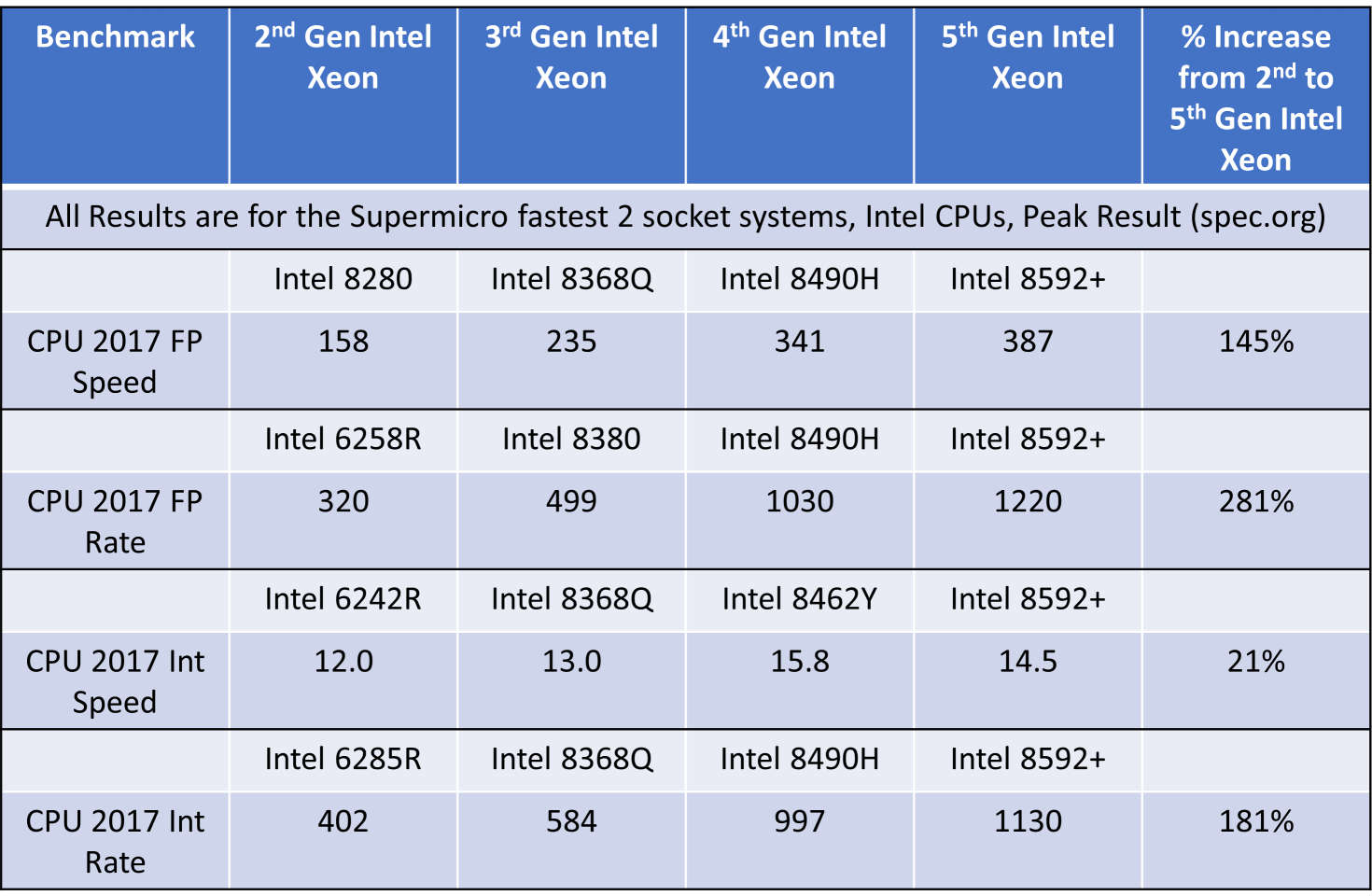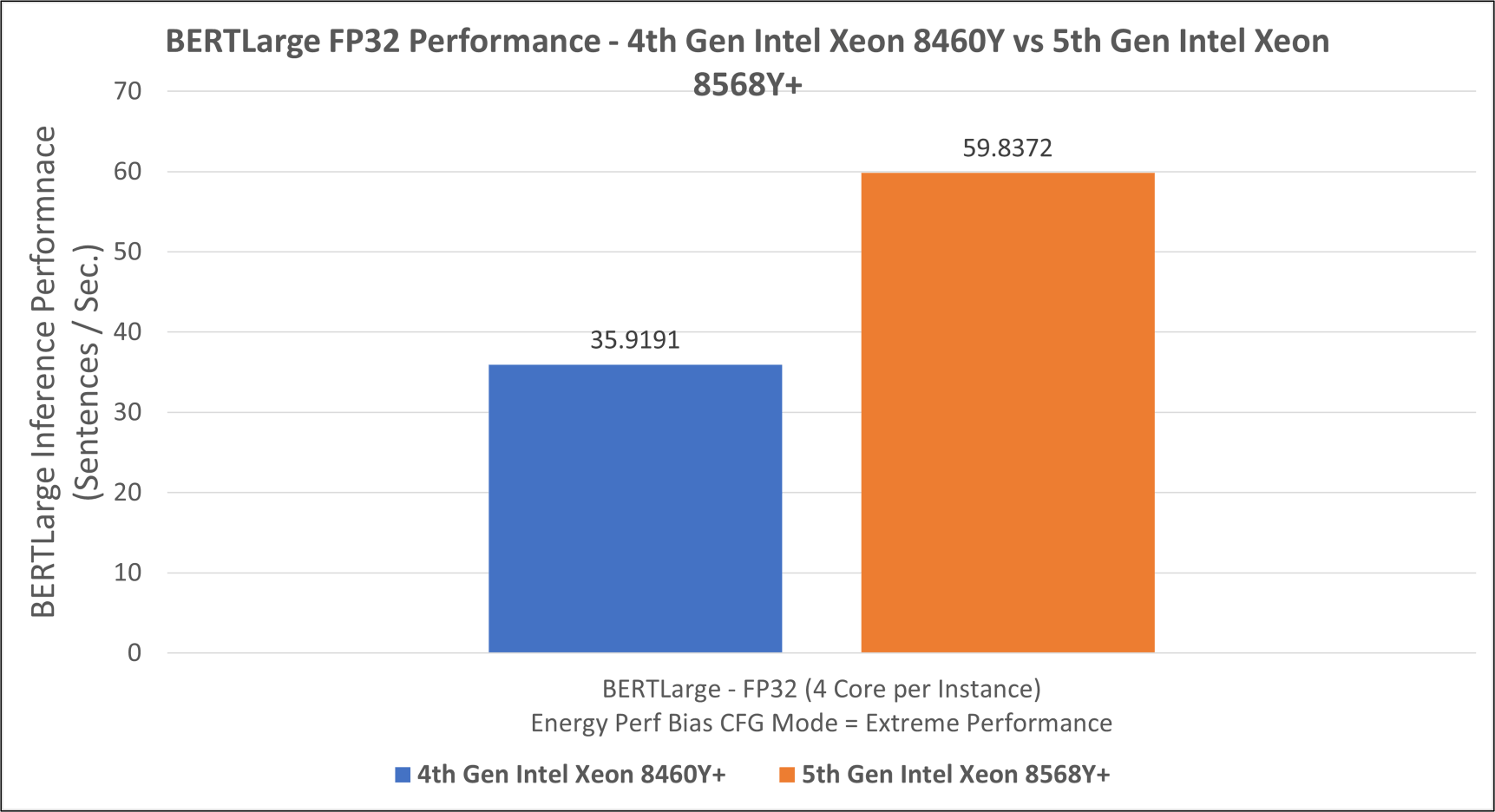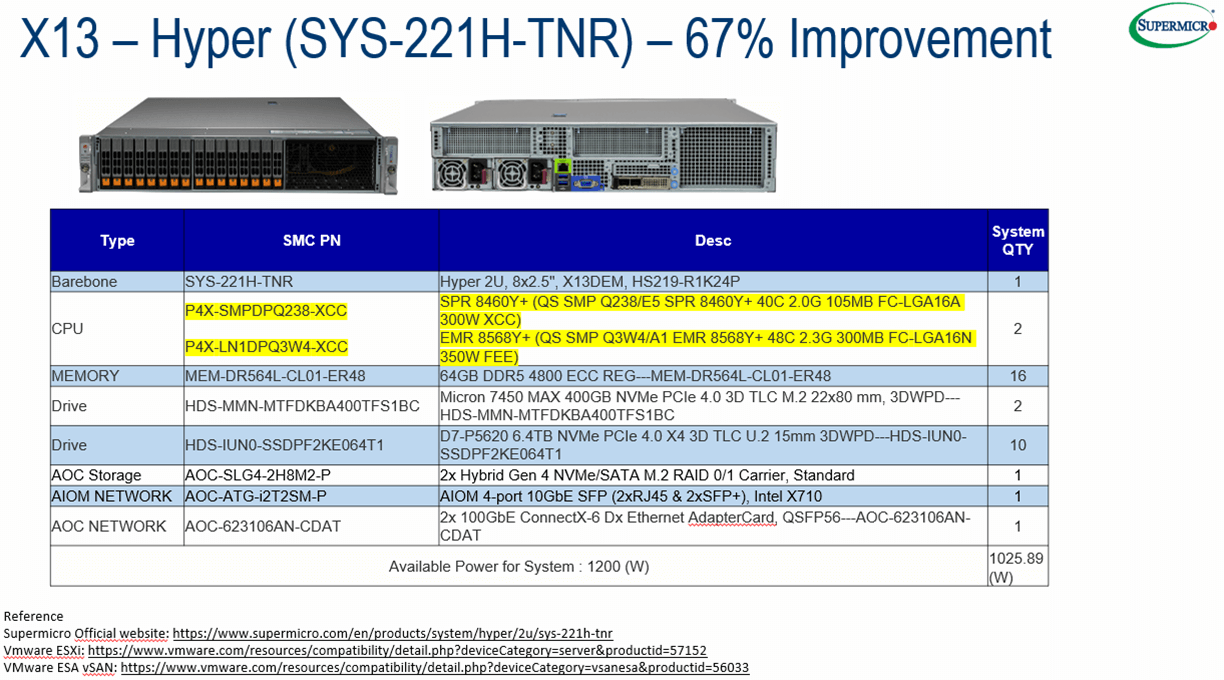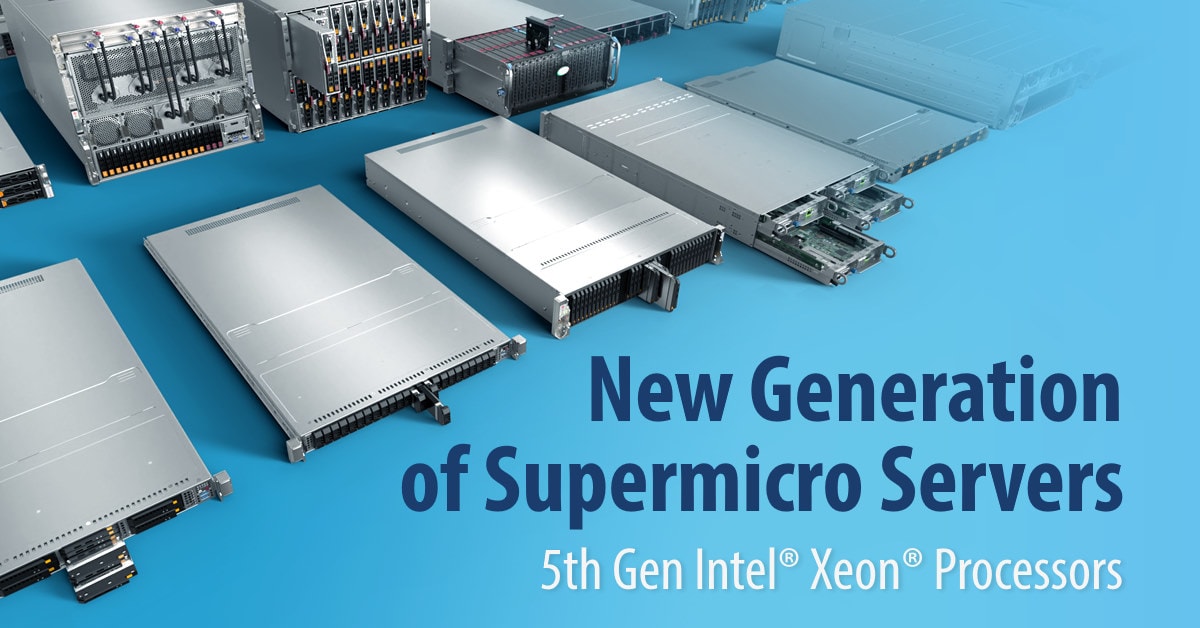Supermicro Servers Excel At Various Benchmarks with 5th Gen Intel Xeon Processors
Generation over Generation Improvements (4th Gen Intel Xeon to 5th Gen Intel Xeon)
- The maximum number of cores has increased from 60 to 64 (6%).
- 21% average performance gain at the same TDP as 4th Gen Intel® Xeon® processors1
- 36% higher average performance/watt across workloads vs. 4th Gen Intel Xeon Scalable processor2
SPEC Performance – The Standard Performance Evaluation Corporation (SPEC) was founded in 1988 by a few workstation vendors who realized that the marketplace desperately needed realistic, standardized performance tests. The key realization was that an ounce of honest data was worth more than a pound of marketing hype. SPEC has grown to become one of the more successful performance standardization bodies with more than 60 member companies. SPEC publishes many performance results each quarter, spanning various system performance disciplines. See www.spec.org for more information.
The following SPEC benchmarks have been run on the latest Supermicro systems, using the 5th Gen Intel Xeon processors. The SPEC CPU values indicate the performance of a given system compared to a base system for running applications that are integer based or floating point based. In addition, the performance reported is of a single copy running (speed) or many copies running (rate) on the given system.

AI Benchmarks
In the realm of artificial intelligence, generative AI has become an indispensable component of daily life. The introduction of BERT (Bidirectional Encoder Representations from Transformers) Large has significantly propelled Natural Language Processing (NLP) into a new era, delivering substantial performance enhancements in large-scale language processing tasks. With the unveiling of the Supermicro X13 with 5th Gen Intel Xeon processors, we are pleased to present a groundbreaking solution that attains a remarkable 67% performance improvement in a generation-over-generation (4th Gen Intel Xeon processors vs. 5th Gen Intel Xeon processors) comparison, particularly evident in the BERT Large benchmark.
The new Supermicro X13 servers with 5th Gen Intel Xeon processors facilitate the execution of the Language Model (LLM), which has been meticulously trained on an extensive dataset comprising text and code. This robust tool proves versatile in addressing a myriad of applications, exemplifying its prowess in the following domains:
- Natural Language Processing (NLP): Leveraging BERT Large, the system excels in text classification, sentiment analysis, and question answering.
- Machine Translation: The Supermicro X13 with 5th Gen Intel Xeon processors demonstrates its proficiency by seamlessly translating text from one language to another.
- Text Summarization: BERT Large is harnessed to efficiently summarize text, enhancing overall comprehension.
- Chatbots: The system's utilization of BERT Large extends to the creation of advanced chatbots capable of engaging in meaningful conversations with humans.
The Supermicro X13 with 5th Gen Intel Xeon processors is a testament to Supermicro's commitment to delivering cutting-edge technology, exemplifying unparalleled performance and versatility in the ever-evolving landscape of generative AI.

By leveraging Intel AMX® technology, Supermicro X13 with 5th Gen Intel Xeon processors as in the Hyper SYS-221H-TNR system provided gen-over-gen (Intel Xeon 8568Y+ vs Xeon 8460Y+) 67% performance improvement on BERT-Large FP32 benchmark.

